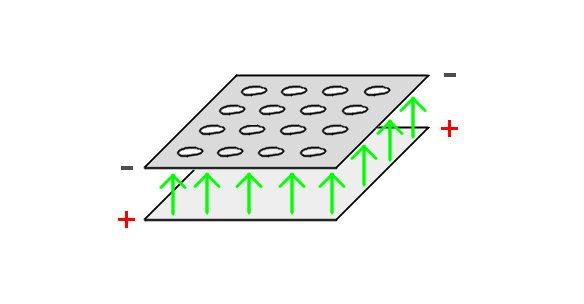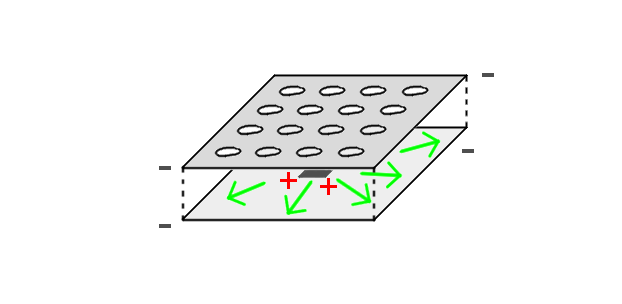A big problem with our initial ion chamber prototypes was that any nearby electrostatic fields had a large effect over the radiation measurements.
Even the temperature-corrected version of the radiation detector was unusable: it produced false detections when bringing a charged pen near the detector (a harmless plastic pen that had been electrically charged by rubbing it with a cloth).
After many test we established that the problem was caused by the electrode topology. To explain this, here is a diagram of how the early prototypes looked:
 As can be seen, in electrical terms the circuit is a capacitor.
As can be seen, in electrical terms the circuit is a capacitor.This would not be an issue by itself, but we observed that the electrically charged objects only affected the detector when they were placed near the holes on the top of the metal box.
Instead the problem is related to the alignment of the internal electric field with the (spurious) external electric influences.
For the next revision, our ion chamber has been updated to use a positive electrode centred within the metal can:

This way the electric field vectors are perpendicular to any electric noise that enters the chamber through the top holes, so theoretically the circuit would be more isolated.
The new topology is also more similar to the rest of DIY ion chambers out there, and still can be manufactured with pick-and-place machines.
Next updates will show the PCB design for the first hand-held prototype.
 Carlos Garcia Saura
Carlos Garcia Saura
Discussions
Become a Hackaday.io Member
Create an account to leave a comment. Already have an account? Log In.